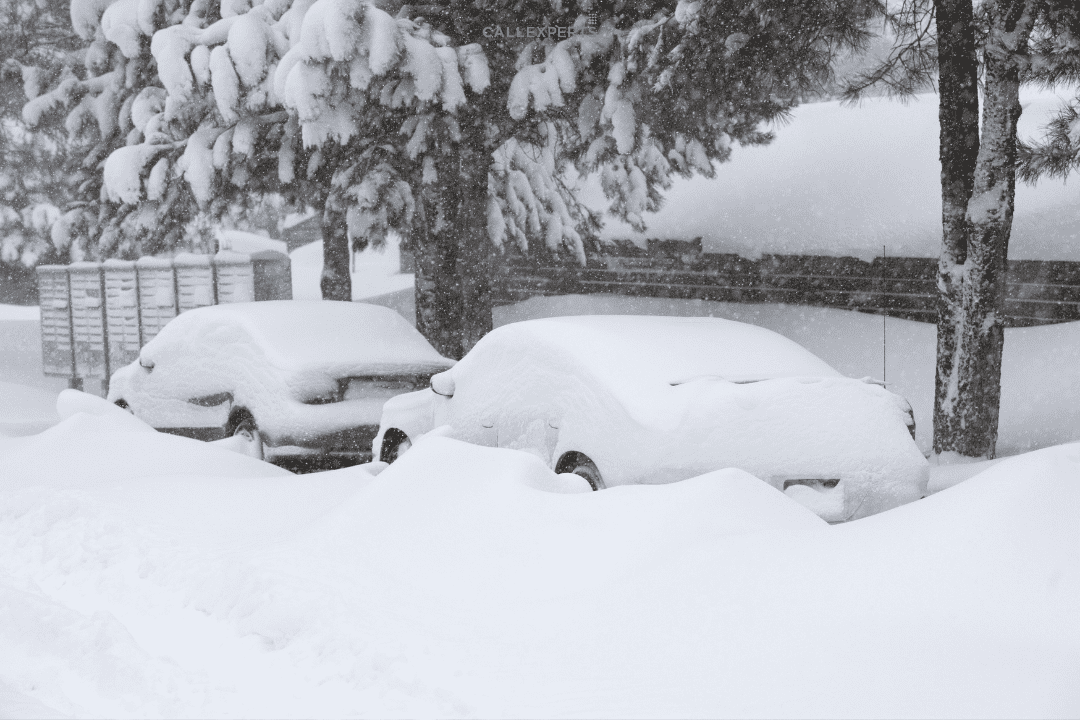Regardless of how stylish a snowflake looks, it has the potential to shut you down. Just ask any business that’s been blanketed in slippery ice or shivering from the blow of a freeze. In December, when it comes to winter storm prep, prevention is better than cure. Don’t let winter weather result in unexpected downtime that all too forces your businesses to close their doors, which can put a significant dent in your revenue for the season.
The trick to avoiding winter disasters is thinking and planning before colder weather arrives and proves disruptive. In 2019, AccuWeather estimated the totals related to economic loss and property damage related to winter storms was above $8 billion. Moreover, winter weather often creates a disastrous financial ripple impact. According to the Institute for Business and Home Safety, small businesses are especially exposed to the effects of severe weather. Roughly 25% of small businesses don’t reopen after a winter weather disaster.
As a business owner, you must commit the necessary effort to prepare for winter weather. Because when you and your team know what to do, you are ready for all the scenarios. Then, your business will end up on top.
Our Top 5 Tips for Winter Storm Preparation.
It’s a business owner’s worst nightmare: a snowstorm strikes and the local roads and highways close down, stranding scores of customers that you can’t get to your business even if your employees want to brave the wintry weather. Colder temperatures can increase leaks in plumbing and the breakdown of various components in HVAC systems. It’s best to take winter storm preparation in stride and lookout for signs of trouble. With some planning and preparation, you can save your business time and money with simple precautions that won’t break the bank or take too much time.
Step 1: Evaluate Your Winter Weather Risks
Risks in winter weather are different for every business. For example, public areas use various heating equipment in their facilities than private companies. The last thing your business wants to encounter is winter weather-related incidents that can put people, property, and profits at risk. With the onset of colder temperatures and heavy snow comes an increased risk of stress on structures such as roofs, siding, and gutters. However, if you are a business that supports or gets called in to fix these problems, like a plumbing or heating/HVAC company, this season can mean a rush in your industry. Therefore, it is essential to your business that you understand the following concepts before the winter weather hits.
- What are you going to do for backup power if there is an outage? If you are a service provider, you may be needed in an emergency.
- How are you going to alert your staff of any closures?
- How will you manage on-call if your managers can’t come in?
- Who will answer the phones for your business if you are too busy or closed?
Understanding where these risks occur and your exposure to them can help you develop a plan to protect your business.
Step 2: Create a Chain of Command
The Chain of Command during Winter Weather policy helps your employees, managers, and customers know who is responsible for a winter weather storm. Documentation of protocol is essential, and you should store your paperwork in both a cloud-based and physical location for access. The documentation should include a “key contacts” sheet that helps employees contact one another and a document explaining how to adjust office hours so workers can travel between buildings. By designating people responsible for specific jobs, you are helping alleviate stress during a time when uncertainty abounds.
A chain of command ensures your organization comes through any weather event in a business-as-usual fashion. Position staff at certain checkpoints in the company to make quick decisions when notified of a weather condition change and keep track of who is responsible for each department. This winter, be prepared.
Step 3: Create a Strategy for Specific Winter Weather Threats
Business owners need a guide to addressing their winter weather risks. This guide should contain a checklist of tasks to complete to protect your business from winter weather hazards. These tasks could include proper snow removal, frost prevention, emergency response planning, and handling structural stress and water damage. It is also essential to have a business continuity plan that involves notifying customers, switching phone lines (especially in case of closures), and managing call-outs and attendance concerns related to winter weather.
Your winter weather strategy is a tool that helps outline specific actions that should be taken when inclement weather strikes. With this simple tool, you communicate your expectations for staff during hazardous conditions. Winter Weather Emergency Strategy helps develop better preparedness plans for your organization.
Step 4: Defend Your Locations Against the Winter Weather Elements
With winter just around the corner, the thought of dealing with possible power loss, property damage, delayed shipments, and lost productivity can bring anyone to their knees! Whatever the size of your facility, prepare your office, tools, vehicles, and equipment before the emergency hits.
Make sure to have backup plans for power, heating/air conditioning, gas, water, refrigeration, IT equipment, telecommunications, security systems, and sewer/water services. Also, arrange for backup food supplies if your operation will be open for an extended period. This way, you’ll have peace of mind knowing that both the safety and well-being of your employees are taken care of.
The risk of damage to property and interruption of services makes it necessary for each location to prepare for winter storms. As part of your preparations, make sure to conduct regular inspections and maintenance of your office building, including walkways and parking lots. Otherwise, invest in disaster relief procedures, tools, and products (like deicers, plows, etc.) to ensure that you can get the supplies you need in advance.
Creating a customized plan to mitigate risks and defend against wind, rain, sleet, and snow will ensure that your business only sees success during the next big winter weather storm.
Step 5: Keep Everyone Informed
Before a significant winter storm, consider important questions such as, “How will staff and customers be notified of the closings?” and “How will you support critical services that might not be available during the storm?” At Call Experts, we can put together a customized communications plan to prevent confusion and frustration. Touch base with your team members so they can execute their parts of the program. And, when closing facilities, we are available 24-7-365 to support your telephone lines, customer requests, on-call scheduling, and after-hours services.
If a winter storm is bearing down on your region, being prepared is an essential. Ensure that your business thrives during winter storms.
Plan and ensure that your workforce can keep moving forward if a storm suddenly hits. Understand the risks, designate critical responsibilities, create a chain of command, protect your office, and keep everyone informed. This is the only way to ensure that the right people and information come together even amid Mother Nature’s fury.







